In 2014, when we selected the smart solutions and the partners that would implement these in Stockholm, we wanted to show how a city can tackle the sustainability challenges of rapid urban growth. Now that these solutions are in place we want to evaluate the results to show that we can achieve the goals initially defined and do so in an economically sound way. When we look at the first set of evaluation data collected we can see at the same time promising results, no results at all and negative results. In many cases we simply do not have enough data to give an accurate answer. Also the systems have in many cases not been fully optimised and/or is running on partial capacity, so it is too early to define if they are working well.
Action area 1: Low-Energy Districts - What is happening in Valla Torg, Årsta and the Slakthus area buildings and what results do we have?
In Valla Torg the refurbishment of the two first multi-storey buildings (7G and 6) and the low-storey building 8 are finalised and the tenants have moved in. The evaluation of energy use has started, but the first set of evaluation data is not complete, so it is too early to tell how well the energy efficiency measures have worked. Refurbishment of the other buildings are still in progress and will be finalised between September 2018 and January 2019.
In the private condominia Brf Årstakrönet the evaluation is on its second year. The use of electricity, water and energy used for heating is evaluated. Each energy source is followed on a monthly basis and compared to the baseline. Also the amount of solar energy produced by PV cells are measured.
Compared to 2015, the first full operational year of savings was around -10%, for district heating -30% for electricity (not including electricity used in apartments) and -4% for water.
In Slakthusarea the refurbishment of building 8 is finalised. The evaluation of energy use has started, but as the building and energy measures were so recently done there is no data yet available telling how well the energy efficiency measures have worked. The substitute buildings Kylhuset in Slakthusareaare also finalised for building related energy efficiency measures. The waste heat recovery will be installed in summer 2018 as well as the PVs combined with battery storage.
Action area 2: Integrated Infrastructures
Installing smart LED-lighting
The smart LED-street lights (solution 5) have now been in operation for 1,5 years and the system has worked well. There are three sub measures implemented and evaluated and the results for the first year of evaluation is presented below. It is important to understand that the baseline is LED-street lights. So the energy saving of replacing a metal halogen street 50 W with LED light of 30W is not included. This saving is about 30%.
- The first sub measure is “Sensor controlled LED lighting for pedestrian and bicycle paths” to enable the lights to provide base lighting to satisfy the feeling of safety at all times and increase the level of lighting when someone approaches. The first 12 months of evaluation indicate an energy saving of 45,9% a year. The original target of 40-50% savings was thus reached.
- The second sub measure is “Self-controlled LED street lighting with pre-set lighting schemes”. The first 12 months of evaluation indicate an energy saving of 14,4% a year. The original target of 20% savings was not reached in this first year.
- The third sub measure is “Remote controlled LED street lighting which can be controlled from a distance”. The first 12 months of evaluation indicate an energy saving of 19,3% a year. The original target of 30-50% savings was not reached in this first year.
The next step will be to define how cost effective these sub measures have been.
A Smart Connected City
The aim of the measure 5.2 is to implement in the city environment, if possible on existing infrastructure, sensors for data collection, analysis, visualization and via an IOT platform also test the possibilities to use sensor data for direct communication to citizens as well as using flow data to pre-program and steer city infrastructure such as street lights.
Two types of sensors have been implemented in the Slakthusarea. The first type is 10 sensors for measuring vehicle traffic on a real-time base and the second type are wifi-based sensors to measure pedestrian and bicyclist traffic. The data from the sensors are analysed and visualised in the IOT platform provided by IBM. Below are some examples of visualised data analytics.
IBM, who is responsible for the open consolidated big data platform (solution 8), will build up a multiuseable data platform where real-time data can be analysed, but also were the data can be turned into practical usecases reducing transport emissions and increasing the quality of life for citizens. The development work is done in an agile process were users from different city organisations work together with IBMs development team. Currently the development team is working on developing a mobile application to help event visitors in the Slakthusarea to navigate in the area is a best possible way. In autumn the development team will start working with how the flow data collected could be used to steer street lights in the area.
 CO2 emission (g/km) from passing vehicles (left) and amount of pedestrians in the area during an event (right)
CO2 emission (g/km) from passing vehicles (left) and amount of pedestrians in the area during an event (right)Smart waste handling
The waste handling system provided by Envac has been running since the summer 2017. This solution (Measure 7.1, 7.2, and 7.3) demonstrates a smart waste solution for residential areas using differently coloured bags for different sorts of waste, transporting the bags long distance underground and sorting them automatically in a treatment plant. There are yet only two inlets in operation in the installation due to the general time plan of the refurbishment of the Valla torg site. When the AWCS is in full operation there will be 13 inlets, thus increasing the amount of waste significantly, in turn making the evaluation more relevant. The organic fraction can be used for biogas production, which in turn can be used in vehicles. So it is very promising that this fraction per quantity is the largest.
Waste sorting results| Color | Fraction | Quantity | Distribution |
| White | Rest fraction | 76 | 20,4% |
| Yellow | Paper packaging | 90 | 24,1% |
| Orange | Plastic packaging | 80 | 21,4% |
| Green | Organic fraction | 127 | 34,0% |
Action area 3: Sustainable Urban Mobility
Building logistics centre and delivery boxes
The Building logistics centre (solution 2) implemented by Carrier, will start handling more materials for the last buildings to be refurbished in Valla Torg. Unfortunately the evaluation data is not yet available, so it is not possible to define how well the solution is working.
The implementation of delivery boxes (solution 9) by Carrier is done. The delivery boxes are actually a delivery room, which later on can be used for other purposes. The delivery room can be easily used for any type of deliveries, small and big. The deliveries are transported by bike to the room. When the package has arrived the tenant will get a message and with an app, open the door and then go and collect it. The tenant can also put returning packages in a special shelf. As the system has been in use for a short time, only a tenfold of packages were delivered. The camera surveilled room together with identification of users and specified door codes guarantee that a package is not accessed by other users by mistake.
 From package delivery by bike to pick up from Tenant using the app
From package delivery by bike to pick up from Tenant using the appSmart Traffic Management
Insero has together with NOAE (Network of Automotive Excellence) implemented an information system for drivers (solution 10). Effects on travel time and the drivers’ experiences has not yet been evaluated.
KTH has developed a smart phone application to follow up changes in travel behaviour. In the same application, information about renewable fuels in Stockholm will be shown. The application is launched, but no evaluation data is available.
Alternative fuel driven vehicles
As part of the GrowSmarter project, Fortum will install up to 10 charging stations and one fast charger (solution 11). The fast charger is installed in Årsta. The normal chargers are also installed in Valla Torg.
The first four refuelling stations for renewable fuels are up and running. The filling station in Årsta is expected to be built in 2018. Data from the first refuelling station shows some drastic results. The station was launched in 2016 as a renewable station and drivers did not think they could also get traditional diesel there. When they did understand this, the diesel sales increased. It is important to remember that only 10% of all trucks in Sweden are defined as green vehicles, so in that perspective 18% sales of biogas is a good result.
Stockholmshem launched its electrical carpool (solution 12) for tenants and habitants in February 2018. In February and March there were 14 tenants who have enrolled themselves to the carpool. The cars are frequently used especially during weekends.
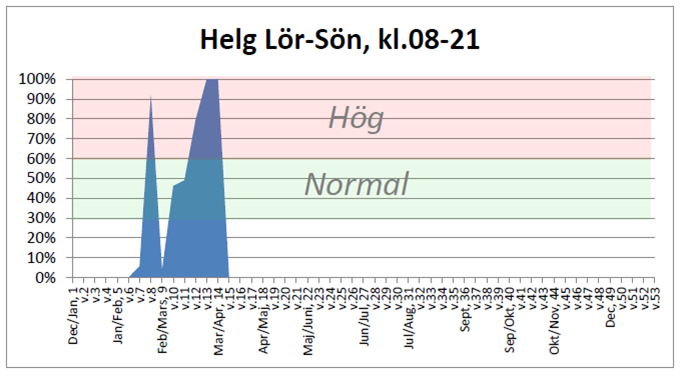
Communication and marketing
An event for tenants in Valla Torg was organised 18th of April 2018. In the events Stockholm Site partners showed smart solutions for the tenants and they could also test solutions like the cargo bike. The event was successful and received positive feedback from tenants.

All photos from the tenant event was taken by Bengt Alm.
In Slakthusarea an inauguration was held 15th of May introducing the smart solutions implemented in the area. Some 100 persons from different organisations attended the event. It was a wonderful weather and the visitors had a possibility to both listen to presentations as well as see the solutions in practice in a study visit.

All photos from the Slakthusarea event was taken by Sven Lindwall.
With this I want to wish you a very nice summer.
 Mika Hakosalo
Mika Hakosalo
Site Manager, Stockholm
For the previous blog post, click here




 New interior window with u-value 0,6, the external window is original
New interior window with u-value 0,6, the external window is original The building with integrated solar panels on the southern side (upper right) of the external glass roof, all lights are LED-lights
The building with integrated solar panels on the southern side (upper right) of the external glass roof, all lights are LED-lights Vehicle sensor installed measuring in- and outcoming traffic in Slakthusarea
Vehicle sensor installed measuring in- and outcoming traffic in Slakthusarea Sign informing pedestrians and bicyclists of traffic flow measurements
Sign informing pedestrians and bicyclists of traffic flow measurements Mixed different coloured bags inside the container
Mixed different coloured bags inside the container  The Valla Torg Electrical Car Pool
The Valla Torg Electrical Car Pool Presenting GrowSmarter in Bratislava, Slovakia
Presenting GrowSmarter in Bratislava, Slovakia
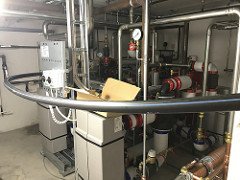

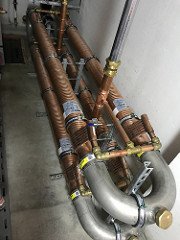
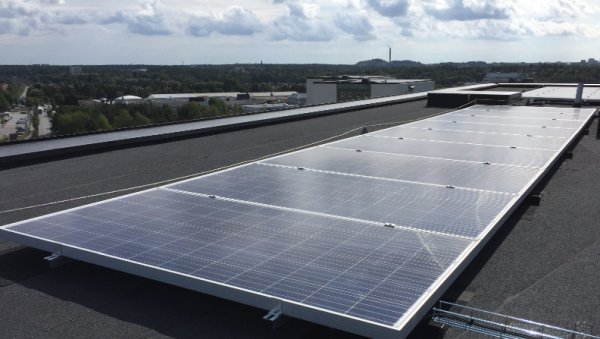
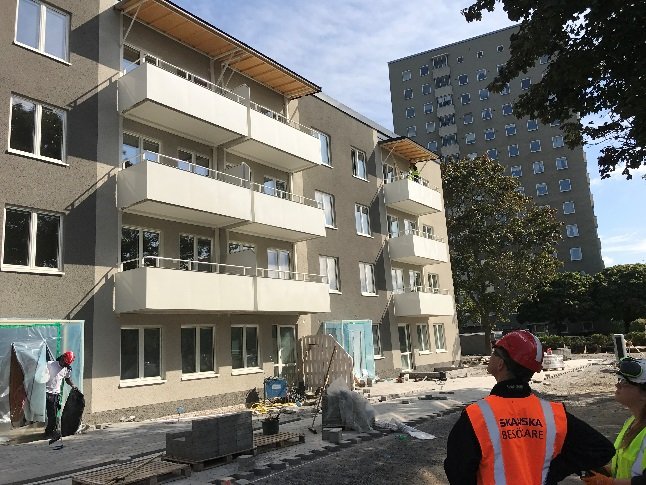


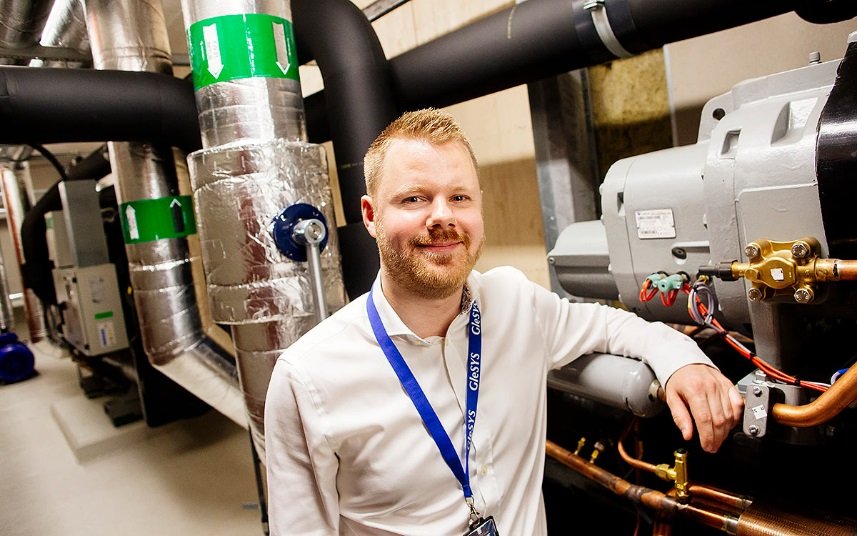


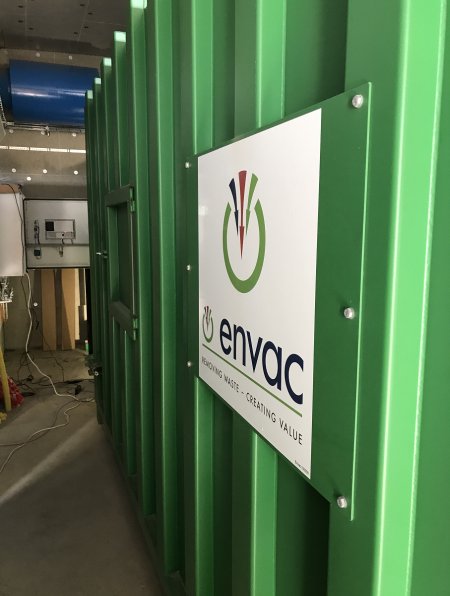

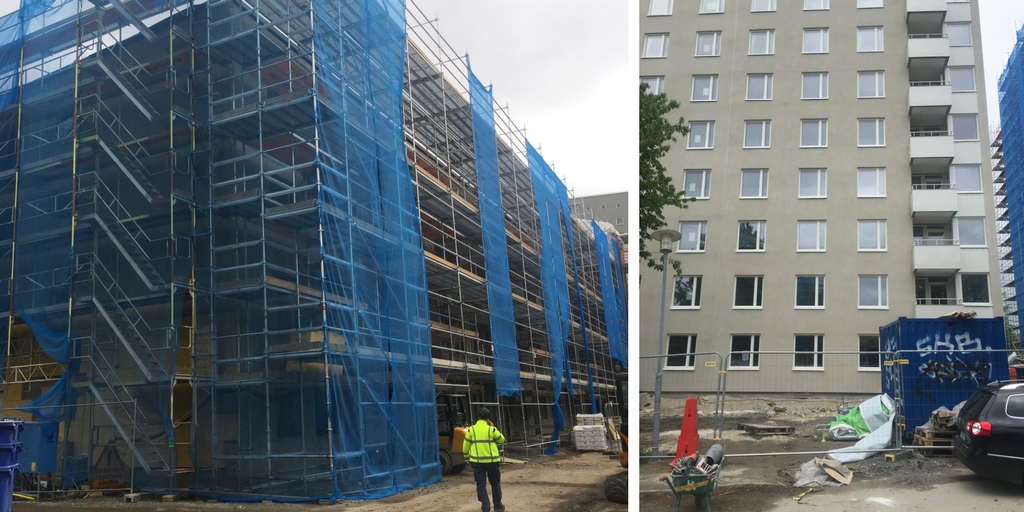

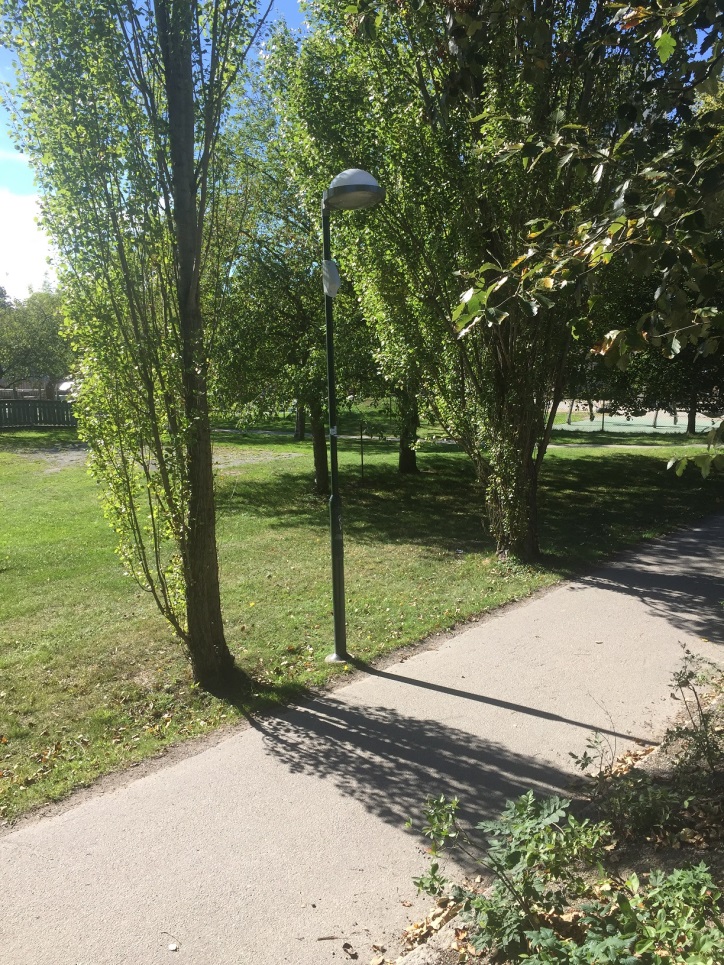
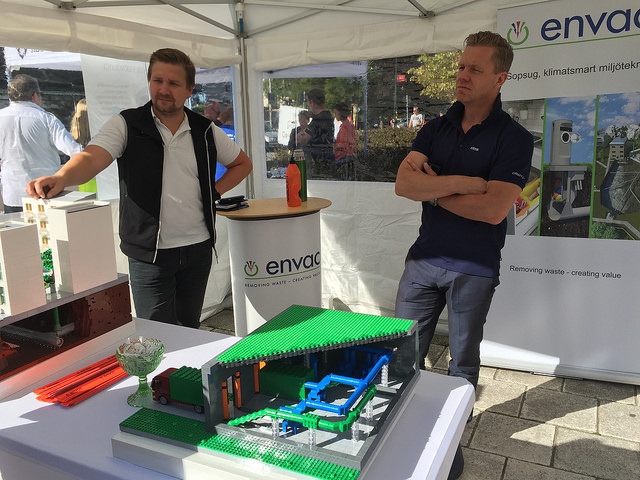
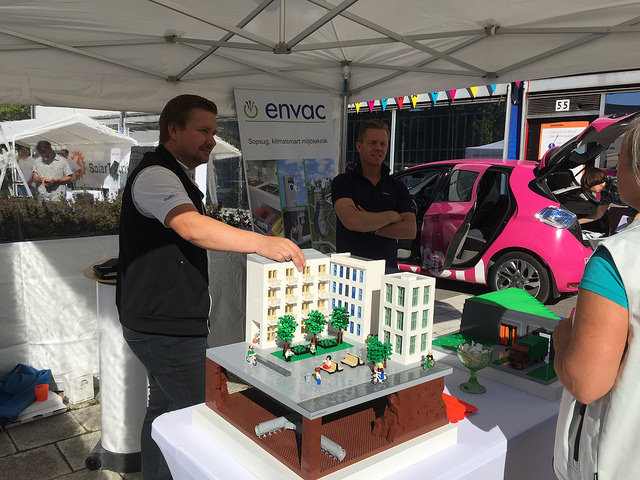
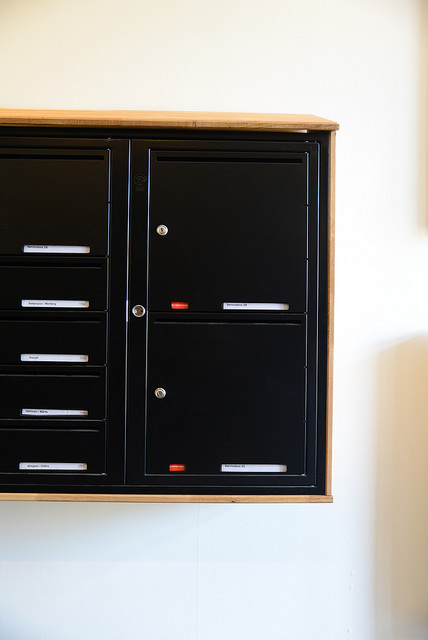




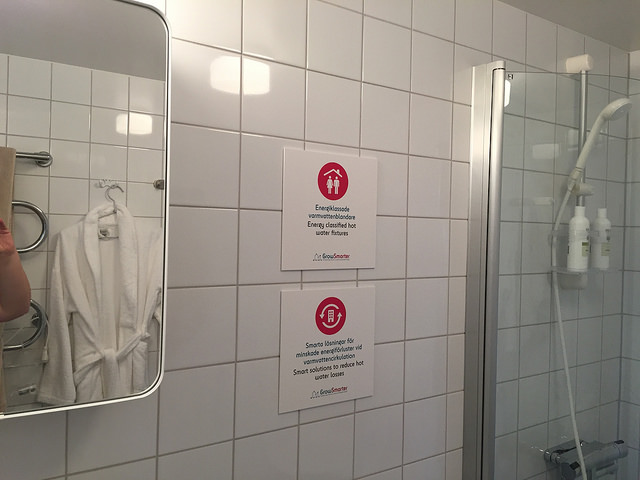
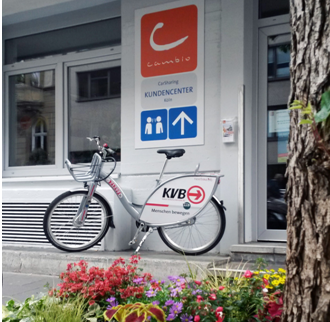 Photos: Bike-sharing ©Cambio Köln
Photos: Bike-sharing ©Cambio Köln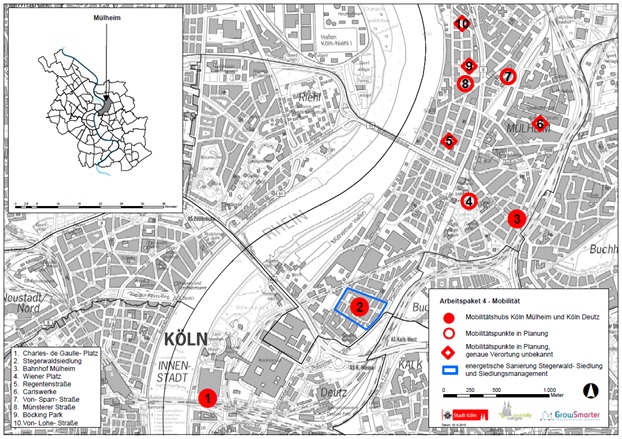
 Charles-de-Gaulle-Square
Charles-de-Gaulle-Square 
 Stegerwaldsiedlung
Stegerwaldsiedlung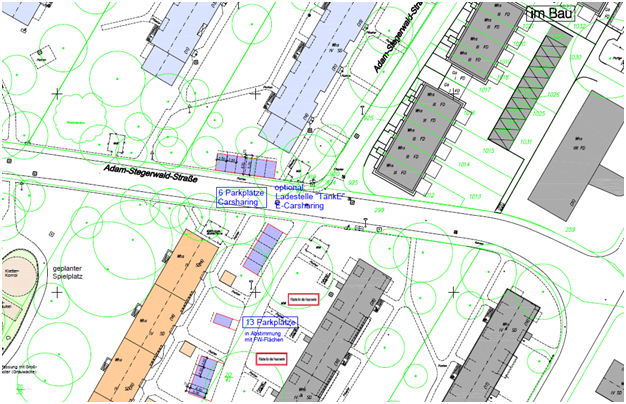
 The Köln-Mülheim station forecourt
The Köln-Mülheim station forecourt 
